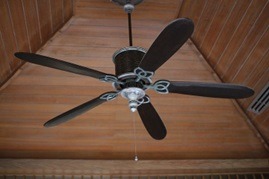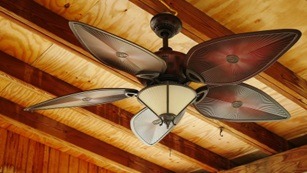Buying a new ceiling fan can be an intimidating prospect. There are so many different ceiling fan designs to choose from – and then there’s sizes and features to consider as well. What size fan do you need for your home? What features are the most useful? These are the kinds of questions that many homeowners must grapple with while shopping for ceiling fans.
When it comes to buying a ceiling fan, the most important thing to know is how to size the fixture appropriately. You’ll also need to think about which ceiling fan features work best for your lifestyle and needs. You’ll need to know when to buy a wet- or damp-rated fan and when to buy a dry-rated one. And, of course, you’ll want to buy a fan that looks nice with the rest of your decor.
Size Matters
Ceiling fans are measured in inches across the sweep of the fan blades. They start at about 29 inches across and go up to 60 inches or more in diameter. You need to choose the right size ceiling fan for your room.
To do that, you’re going to need a square footage measurement of your room. Measure the length and width of your room and then multiply those two numbers together to find the total square footage. If the square footage is less than 100 feet, buy a ceiling fan that’s 29 to 36 inches wide. If the square footage is 100 to 150 square feet, buy a fan 36 to 40 inches wide. If the square footage of the room is 150 to 250 square feet, buy a can 42 to 50 inches wide. If the fan is 250 to 400 square feet, buy a fan 50 to 54 inches wide. If your room is bigger than that, you’ll want to buy a fan that’s at least 60 inches in diameter.
Choose Your Favorite Features
These days you can buy nice ceiling fans with all kinds of features. Smart fans are gaining popularity; they can connect to your home wifi network so you can control them from a smart home device or smartphone. Maybe you want your fan to operate on a schedule, so that your living room is nice and cool when you get home from work, or you don’t have to get back out of bed to turn on the bedroom ceiling fan before you fall asleep. You can buy programmable fans and fans that kick on by themselves when they sense that the room is above a preset temperature.
Of course, only you can decide what features you absolutely need in a ceiling fan. You might be just fine with an old-fashioned dumb fan that has a remote control or even just a pull chain. But it’s worth looking into some of the features you can get on a really nice fan, because they can make it so much easier to get more out of your fixture.
Find an Attractive Design
Finding a fan design that fits into your home decor is a challenge all its own. There are so many ceiling fan designs available, you can find yourself feeling overwhelmed by the choices on the market. Sit down and think about your own decorating style, if you haven’t already. Is your style more traditional? You might want a vintage-look fan. Do you aspire to a clean, minimalist look? Maybe you’d like a two-blade fan with a curvy silhouette. Don’t give up – if you look long enough, you’re bound to find something you like.
When to Get a Wet-Rated Fan
Ceilings are either wet-rated (they can handle getting wet), damp-rated (they can handle humidity in the air, but not actual rain), or dry-rated (they can’t handle moisture or humidity at all). You should only hang a dry-rated fan in a room where moisture and humidity don’t occur, like a bedroom or living room. Kitchens and bathrooms require fans to be damp-rated at least, so they can withstand the humidity that cooking and bathing releases into the air. If you’re hanging your new fan outside, on a porch, for example, you need a wet-rated fan. Sure, your fan might not be directly in the rain, but it can still get enough exposure to experience water damage on a covered porch. You don’t want your new ceiling fan to break down prematurely.
A ceiling fan is a major purchase, and it’s one that can make a huge difference to the comfort and look of your home. It’s important to take the search for a ceiling fan seriously, because you’re going to be using and looking at this fan for a while. Take your time, and choose a fixture that will serve you well for years.


